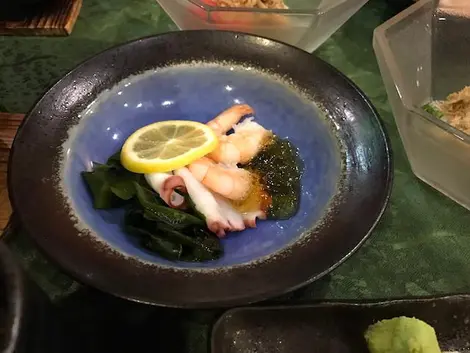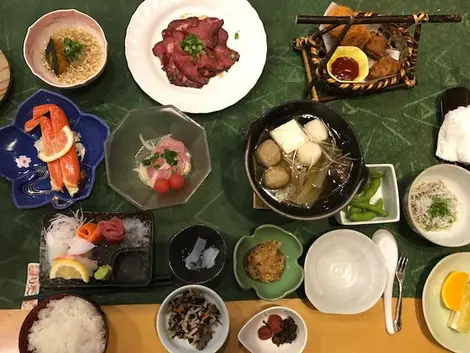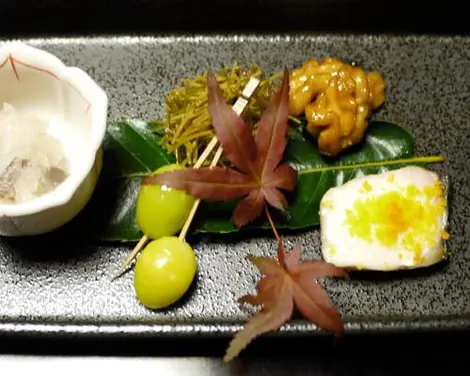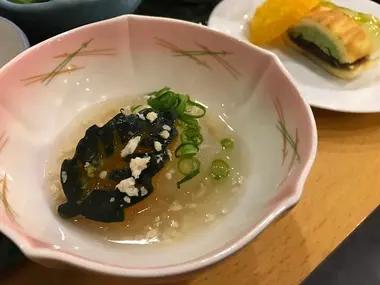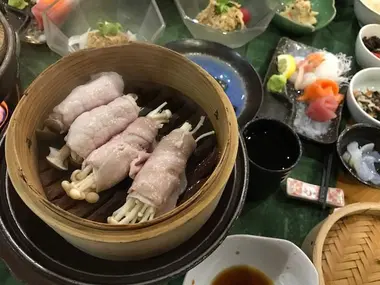Kaiseki ryori, Japanese gourmet cuisine 懐石料理
- Published on : 18/06/2020
- by : F.F.Y.
- Youtube
The small dishes in the big ones
Japanese cuisine is renowned around the world and one of its most refined and sought-after expressions bears the name of Kaiseki ryori , the Japanese gourmet meal comprised of several courses, which originated in the small dishes served during the tea ceremony for centuries. Today, the tradition is reserved for restaurants, ryokans (traditional inns), or prominent hotels.
The art of culinary composition
Kaiseki ryori is the art of gastronomy and sophistication taken to its peak. It is not only an extremely fine and varied menu in taste; it is also a classic composition of shapes, textures, and colors.
A meal of this lavish cuisine is traditionally composed of a succession of small dishes, each unique in ingredients, preperation, and presentation.
If there is no set menu in a Kaiseki ryori meal, there are still customs to follow.
First of all, the ingredients must be fresh, following the basics of traditional Japanese cuisine. The preparations, inherited from the art of Buddhist cuisine, are often based on vegetables and tofu – but the whole menu will not necessarily be vegetarian. You will find sashimi, meat-based broths… The temperature will also be alternated, as will the textures served.
- To read also: Shôjin ryôri, the kitchen of the monks
Then, each dish is prepared by a master chef of traditional Japanese techniques. each dish from the same course will not be alike: the ingredients are never the same, nor the cooking and presentation techniques. To nurture diversity, tableware plays a crucial role: the shape of the dish, its color, and its material are taken into account as a whole that comes to marry the dish itself. The whole meal must constitute a picture, both visual and appetizing!
Refinement of service and presentation
In general, even if their preparation and the order in which they are served vary from one restaurant to another, certain types of dishes are regularly found on the menus of Kaiseki ryori. Starting with sakizuke, an appetizer, then shiizakana, a broth served over its fire, in which vegetables, mushrooms, or meat are cooked according to the chef's selection.
Then comes the hassun, the "main" dish which includes several small dishes, a mukosuke (individual sashimi), a takiawase (small dish of tofu or meat with vegetables), or a yakimono (grilled fish)…
The list can go on and on, as the table generally ends up being covered with small dishes, like a banquet.
- Read also: The Kikunoi restaurant in Tokyo
For a complete experience, a meal cannot be served in just any setting. The environment and setting play an equally important role in the Kaiseki experience...
This is why Kaiseki ryori is usually served in private rooms. Most of the restaurants or inns that serve Kaiseki ryori are located in calm and refined places, sometimes overlooking a Japanese Zen garden, which allows you to enjoy your gourmet meal in most Japanese settings. One could even say that a meal claiming to be Kaiseki without this element of tranquility would not be one.
But such refinement comes at a price... Authentic gourmet meals can cost up to 40,000 yen ($348/307€), but some restaurants offer lower prices for lunch, allowing you to experience Kaiseki ryori at an affordable price. In some establishments that do not offer private rooms, you can also find much less expensive gourmet menus, around 15,000 Yen ($130/115€).




